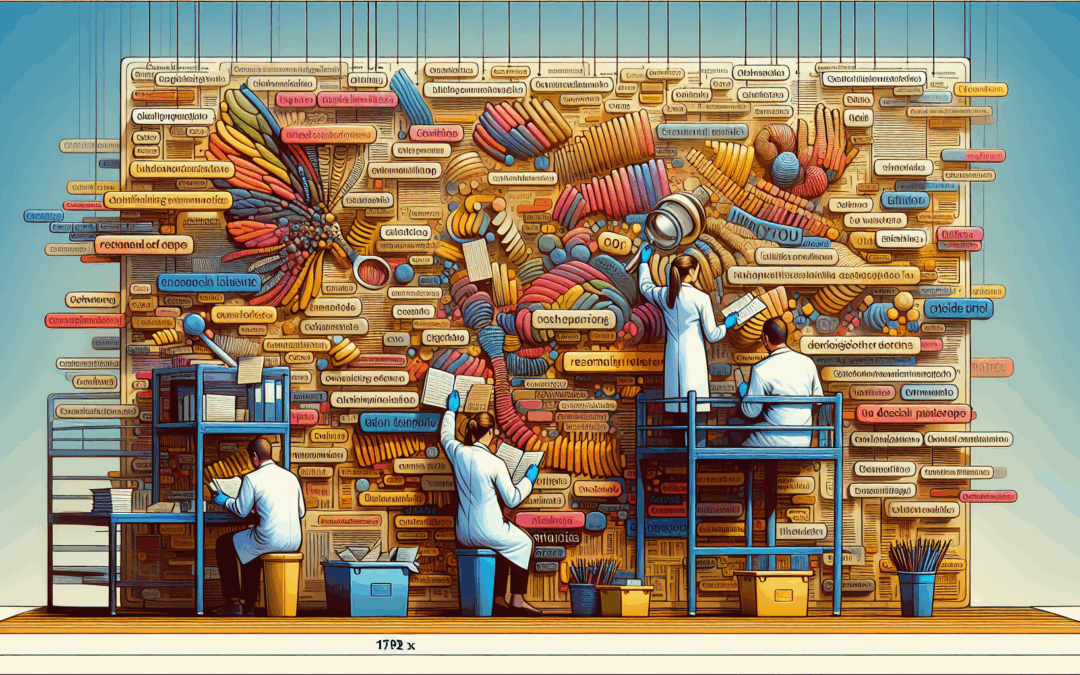Distilling Complex Research into Actionable Insights in Radiation Oncology
🌟 In the ever-evolving field of radiation oncology, professionals continually strive to provide cutting-edge treatment while maintaining compassion and hope for their patients. It is crucial to break down complex research into comprehensible insights, ensuring that the core findings and essential conclusions are effectively communicated. This approach not only advances the field but also inspires others to engage with and contribute to the growing body of knowledge.
📚 When delving into a scientific article, begin by exploring its structure. By breaking it into sections like introduction, methods, results, and discussion, you create a roadmap for understanding. Identifying the main arguments and the data backing them is key. This ensures that only pertinent information shines through, highlighting the study’s core contributions to the field.
🔍 Distinguishing between central themes and supplementary details sharpens the focus on what’s truly important. Employing active reading strategies such as highlighting and note-taking enriches comprehension and supports originality. It’s about transforming dense research into actionable insights that can inspire ongoing innovation and patient-centered care within radiation oncology.
💡 Tailoring your approach to the type of article can further enhance understanding. For scientific papers, zero in on research questions, methodologies, findings, and their implications. For news pieces, capture pivotal events, perspectives, and societal impacts. This dedication to clarity and conciseness not only informs but inspires, driving forward the mission of enhancing lives through exemplary care.
🌼 Finally, leveraging modern tools like annotation systems can simplify complex material, spotlighting key concepts and evidence. This technological advantage streamlines the summarization process, making it easier for healthcare professionals to focus on delivering hope, healing, and innovative care solutions. By fostering a community of informed and inspired practitioners, radiation oncology continues to light the way toward a brighter future for patients worldwide.
The ideas presented here are derived from the following article:
🌟 In the ever-evolving field of radiation oncology, professionals continually strive to provide cutting-edge treatment while maintaining compassion and hope for their patients. It is crucial to break down complex research into comprehensible insights, ensuring that the core findings and essential conclusions are effectively communicated. This approach not only advances the field but also inspires others to engage with and contribute to the growing body of knowledge.
📚 When delving into a scientific article, begin by exploring its structure. By breaking it into sections like introduction, methods, results, and discussion, you create a roadmap for understanding. Identifying the main arguments and the data backing them is key. This ensures that only pertinent information shines through, highlighting the study’s core contributions to the field.
🔍 Distinguishing between central themes and supplementary details sharpens the focus on what’s truly important. Employing active reading strategies such as highlighting and note-taking enriches comprehension and supports originality. It’s about transforming dense research into actionable insights that can inspire ongoing innovation and patient-centered care within radiation oncology.
💡 Tailoring your approach to the type of article can further enhance understanding. For scientific papers, zero in on research questions, methodologies, findings, and their implications. For news pieces, capture pivotal events, perspectives, and societal impacts. This dedication to clarity and conciseness not only informs but inspires, driving forward the mission of enhancing lives through exemplary care.
🌼 Finally, leveraging modern tools like annotation systems can simplify complex material, spotlighting key concepts and evidence. This technological advantage streamlines the summarization process, making it easier for healthcare professionals to focus on delivering hope, healing, and innovative care solutions. By fostering a community of informed and inspired practitioners, radiation oncology continues to light the way toward a brighter future for patients worldwide.
